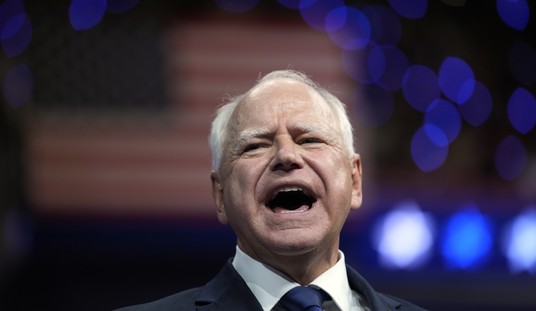Critics of the energy plan Rick Perry will introduce today say it’s “Bush and Cheney gone wild,” but it’s hard to object to common-sense proposals that would create 1.2 million jobs. When Perry delivers the first major policy speech of his campaign today at a Pittsburgh steel mill, he’ll call for expanded oil and gas production, reduced environmental regulations and revised incentives for various types of energy development.
“Getting the energy industry back to work is the quickest way to spark 1.2 million good, well-paid American jobs, and at the same time reduce our dependence on energy from nations that are all too often hostile to the United States,” Perry said in a telephone interview Thursday with USA TODAY previewing the speech at a Pittsburgh steel mill.
He vowed to reverse many of the energy policies pursued by President Obama, saying “the radical environmental movement” had been “sitting in the front of the train, being the engineer” during Obama’s tenure.
Specifically, Perry plans to permit drilling in the Arctic National Wildlife Refuge (ANWR) in Alaska and in expanded offshore areas; reconsider the Environmental Protection Agency’s clean-air and other regulations; repeal the EPA’s authority over CO2 and greenhouse gases; approve the Keystone XL pipeline; establish litigation deadlines to expedite lawsuits related to energy and the environment; and phase out subsidies that benefit specific kinds of energy, retaining only a research and development tax credit that benefits all energy producers (oil, gas, wind, solar, etc.).
Essentially, what Perry proposes is what this Oklahoma-bred girl has been advocating for a while now. Perry claims his plan will create 1.2 million jobs and that seems plausible. Consider: Scotland-headquartered consulting firm Wood Mackenzie — which has extensive experience analyzing oil and natural gas industry issues — recently released a study that showed the U.S. could create 1.4 million jobs, bring in an additional $800 billion in revenue and add 10 billion barrels of additional oil and gas by 2030 simply by “unleashing domestic energy.” What did Wood Mackenzie mean by that last phrase? Almost exactly what Perry plans to do:
The policy changes include opening non-park federal onshore and offshore areas to development where now prohibited, returning permitting in the Gulf of Mexico to historical levels, approving the Keystone XL and other pipelines, and establishing a regulatory environment that permits full development of the nation’s oil and gas resources, including those locked in shale formations.
Consider, too, that energy states still lead in job creation, despite the regulatory clampdown that followed the Deepwater Horizon oil spill last year.
Perry’s also right to roll back EPA regulations. The agency’s newest round of rules would cost $21 billion just to administer (i.e. that’s not the economic cost of the regs). Past a certain basic safety point, regulations rarely create value and regularly result in unintended consequences. Take just one example of regulations gone awry: After a number of oil and gas roughnecks died in flash fires, the Occupational Safety and Health Administration required rig workers to wear heavy fire-retardant clothing all the time. The result? An anecdotal increase in deaths from heatstroke. Point is: Bureaucrats don’t always understand the industries they regulate.
Regarding incentives for renewables, Perry’s plan is especially appealing. Eliminating energy-specific subsidies and instead supplying incentives for research and development in general just levels the playing field. Yes, that elimination will disproportionately affect renewable energy companies — but only because they disproportionately benefit from subsidies. Right now, for every 2 cents of subsidies for “Big Oil,” wind and solar receive $1. Basically, Perry just plans to get out of the business of picking losers. After Solyndra, that should be a solution we can all get behind.
Whether these proposals will help Perry’s chances at the presidency is almost beside the point: What matters is that he’s introducing the substance of this plan to the race. Just as Cain’s 9-9-9 plan has sparked conversation about tax reform, this plan should spark a much-needed discussion about energy policy. Let those who oppose the plan explain how the U.S. can afford to go without the more than a million jobs it would create.








Join the conversation as a VIP Member